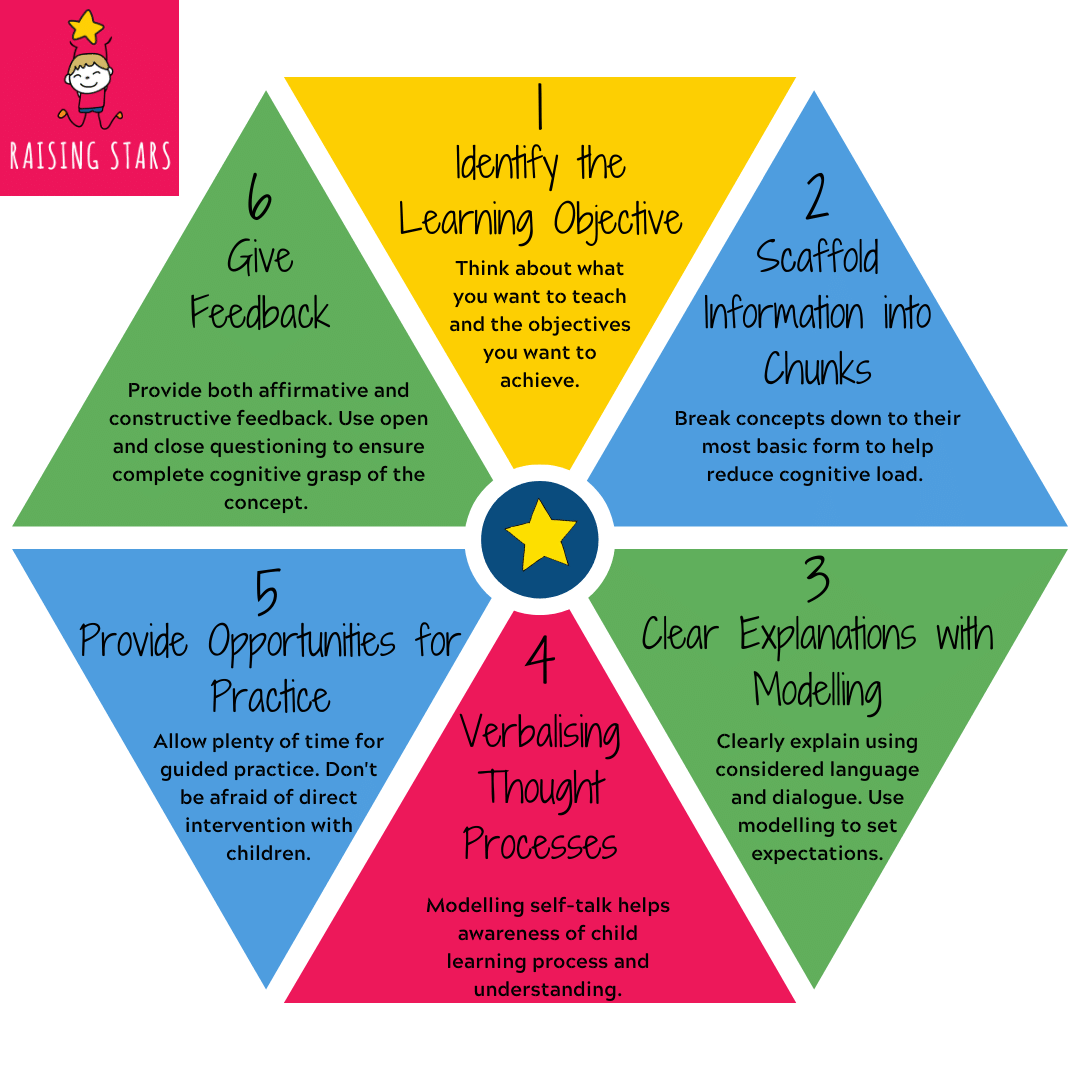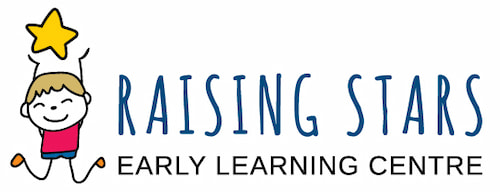Explicit Teaching
Incorporating explicit teaching is an essential practice that educators should consider in every early childhood learning centre. Explicit teaching not only helps children understand instruction, but also ensures that they actively comprehend the concepts that educators introduce.
Explicit teaching has been identified as a critical pillar in forming an effective teacher. The NSW Government states that it is one of the eight quality teaching practices that create effective learning environments.
What is Explicit Teaching?
Explicit teaching, often called explicit instruction, is a teacher-centred strategy that requires educators to make the desired achievable learning goals and outcomes clear to the children through a range of strategies.
The process allows children to become actively aware of their learning through establishing a clear understanding of four key pieces of information:
- How to do the task.
- Why they are doing the task.
- How the task relates itself to, and builds upon previous learning experiences.
- What learning goals and outcomes are expected from the children.
Educational research has found that children can complete tasks more effectively and make significant strides in their cognitive development by explicitly involving children in their learning development expectations. Therefore, explicit teaching should be a central pillar in teacher education programs.
While similar in nature to direct instruction, explicit instruction incorporates flexible guided modelling and consistent formative feedback to ensure the proper child fulfilment of learning objectives.

Direct Instruction
Direct instruction is another teaching strategy that promotes carefully planned lessons around specific learning goals and outcomes. The philosophy behind direct instruction is that a well-prepared lesson plan should predict any problems or misunderstandings that could inhibit the learning process. Therefore, through considered preparation, you can script responses to anticipated problems and therefore accelerate child learning.
Meanwhile, where direct instruction focuses on preparing for intervention with children, explicit instruction is more dynamic in its approach by providing spontaneous feedback for correction.
Explicit vs Implicit Teaching
Explicit teaching is a much more educator-involved process with the children’s learning process. Meanwhile, implicit instruction is an approach where you encourage a child’s independent thinking and experimentation. This typically involves the child developing their own understanding of the set task and finding learning objectives through trial and error.
Cognitive load theory states that explicit instruction is the most effective teaching strategy for novice learners, as research suggests that in-depth instruction and expectation setting helps affirm concept understanding.
Therefore, explicit instruction is most effective in early childhood education, as children can be considered as novice learners.

Explicit Teaching Framework
To support achievement and ensure proper delivery, a step-by-step framework for explicit teaching. The framework closely follows a six step procedure, these being:
- Identify the learning objective
- Scaffold information into manageable chunks
- Clear explanations that are supported with modelling
- Verbalising thought processes
- Provide opportunities for practice
- Give Feedback
Why is Explicit Teaching Important?
Explicit teaching is essential in early childhood education because it can help kids comprehend new concepts clearly and effectively, leaving no room for error with misunderstandings.
Benefits of Explicit Teaching
Student studies have highlighted key benefits that are associated with explicit teaching practices.
Benefits of explicit teaching include:
- Improved speed of learning progress and cognitive development.
- Improved ability to recall previously learnt knowledge.
- Improved instruction-following skills, an essential element for school readiness.
- High rate of task completion through establishing expectations and guidance.
- High rate of children achieving all learning objectives efficiently and effectively.
- Engages children who have learning disabilities.
- Provides flexibility in the classroom, allowing you to intervene in children’s learning processes at any time.
- Easy to apply due to its systematic step-by-step approach.
Who it Helps and When to Use It
The guided nature of explicit teaching can also benefit children who may have issues with working memory or attentional disorders. Your consistent engagement and reaffirming of the instruction with the child help them keep on track to achieve the desired learning goals. Furthermore, due to the teacher-involved nature of explicit learning, it also helps you engage the quieter children for more active and successful participation in activities.
Explicit teaching is most effective when introducing children to a new concept, skill, or idea. This is because the approach ensures that all kids have the same level of understanding through methodological explanation, modelling, guidance and feedback.
Explicit Teaching Strategies
While explicit teaching is an essential tool for educators in early childhood learning centres, it can be ineffective if implemented incorrectly. However, academic research (click here for more information) has created 16 explicit teaching strategies to help you purposefully incorporate the educational method within your educational practices.
These recommended strategies include:
1. Focus on critical learning goals: establish an instructional target and teach essential elements of the skill that will empower children to advance their understanding of the concept.
2. Practically order the learning objective: consider the order of progression when wanting to introduce a concept. You should think about what sequence best suits a child’s thinking pattern.
3. Breakdown concepts into manageable chunks: breaking up complex concepts allows a better grasp of the skill and motivates children to advance their learning.
4. Organise tasks with a specific learning focus: plan the task to promote the learning objective in a clear and achievable way.
5. Introduce kids to the task by clearly stating what you expect from them: set your expectations early and explain to the children why it’s important.
6. Remind children of previous skills/concepts associated with the task: review relevant information and reaffirm the skill’s relationship with previously taught concepts.
7. Give children step-by-step instruction with demonstrations: modelling the task with easy-to-understand instruction and giving children an idea of the standard of completion.
8. Use deliberate and explicit language during instruction: use consistent, unambiguous wording and terminology so as to ensure children receive clear explanations.
9. Ensure well-paced instruction: keep children engaged through short and clear instruction. If children lose focus, they cannot obtain all the necessary information to complete the task and achieve desired learning outcomes.
10. Give a wide range of examples and non-examples: establish understandings of when, or when not, to apply the task in real-life situations.
11. Guide and support child’s practice of task: provide supported practice during the task. This requires giving the children real-time assessment in their performance (including affirmation and correction).
12. Use questioning to promote higher-level understanding: employ open and closed questions to develop higher-order critical thinking skills within children.
13. Monitor child completion of task: watching and listening to child performance is essential in guiding them towards desired learning outcomes.
14. Give timely affirmative and corrective feedback: immediate purposeful and understandable feedback is essential. Feedback can either engage children by using corrective language to tweak their performance or using supportive language to build confidence in their ability to complete the task.
15. Guide child reflection: use reflection as a time to guide children’s thought process to assess what they learnt, how they learnt it and why. This strategy is critical to reaffirming child understanding of the desired learning outcomes.
16. Give distributed and cumulative practice: distributed practice refers to providing repetitive opportunities to practice the new skill over time to ensure proper comprehension. Cumulative practice refers to providing opportunities to practice the combination of new skills with previous knowledge. This allows children to understand how chunks of skills come together in cohesion.
Explicit Instruction with Inquiry Based Learning
Despite differing perspectives, it is untrue that explicit teaching limits the opportunities for inquiry based learning (if implemented correctly). On the contrary, you can strategically use these two teaching approaches to ensure the best child cognitive development.
Explicit instruction introduces a child to new concepts or skills, effectively laying a foundation for knowledge. Inquiry based learning then builds upon this knowledge via the application of higher-order thinking and critical analysis. Ultimately, it is the cohesive strategic use of these two practices that aids children’s rapid cognitive growth and advances their understandings of the word.
Explicit Instruction and the ‘I Do, We Do, You Do’ Model
Explicit instruction shares an important relationship with the ‘I Do, We Do, You Do’ model, as both have similar processes. Therefore, explicit teaching strategies can be applied through various stages of this model.
For example, in the I Do phase, you can make use of:
- Providing step-by-step instructions
- Using clear and deliberate language
- Ensuring well-paced instruction
- Providing a wide range of examples and non-examples
Within the We Do phase, you can make use of:
- Guiding and supporting child’s practice of task
- Using questions to promote higher-level understanding
Within the You Do phase, you can make use of:
- Monitoring child completion of task
- Providing timely constructive feedback
- Guiding child reflection
- Setting distributed and cumulative practice
Effective teachers are able to incorporate these explicit teaching strategies within the ‘I Do, We Do, You Do’ Model to help build student learning and improve long term memory retention of the concept. In return, this can guide the student to advance their knowledge of the concept to a level of independent mastery.

Examples of Explicit Teaching
If you wanted to teach your children about early numeracy skills (as key identified skill of the EYLF), you would need to break down your approach across the 6 step explicit teaching framework with the correct application of strategies.
- Identify the learning objective: First, you will need to identify the specific learning objective when planning the task. For example, early numeracy skills are too broad a concept for a novice learner to grasp. Therefore, to lighten the cognitive load, identify a specific objective that you want to teach the children. For this example, we will focus on the concept that the last number said when counting a group tells how many are in that entire group.
- Scaffold information into manageable chunks: Assess this objective and break it down to its most basic form. For example, to teach children that the last number said when counting a group tells you its total value, you first need to establish that numerals can be sequenced before advancing to the next phase of understanding.
- Clear explanations that are supported with modelling: Next, you would introduce the concept of sequencing through explanation and modelling. This can include counting songs or fingerplays, such as five little ducks or ten in the bed.
- Verbalising Thought Processes: Employ open and closed questions to clarify the meaning of sequencing to children. This will help you check that children have successfully understood the concept, making them aware of the desired learning outcomes.
- Provide Opportunities for Practice: Provide children with the chance to practice sequencing numbers with their fingers counting one to ten. During this stage, be sure to observe the children and ensure that they are counting correctly. Next, you can elevate this practice to a real-world scenario, such as grocery store play which requires children to count different items.
- Give Feedback: Provide real-time feedback to the children, whether affirmative: well done, good job, or constructive: maybe try again, are you missing something do you think? If there is a consistent error across the children, you will have to restart the process. This direct intervention helps children correct any critical mistakes that may hinder any future understanding of advanced topics.
Explicit Teaching Practices at Home
While explicit instruction is not something that every parent may use in the family home, it can help get children to complete small household tasks.
For example, if you want your child to clean up their play area, you can adopt explicit teaching strategies such as breaking the task down into manageable chunks with clear step-by-step instructions. You can further incorporate explicit teaching by modelling where the toys are stored, alongside providing affirmative feedback when your child completes the task.
Not only does this effectively communicate your expectations from your child, but it also further prepares them for real-life situations and promotes school readiness through their ability to follow instructions.
How to Set Up the Classroom Rules with Explicit Teaching
Explicit teaching can also be made of use when dictating rules. Establishing a clear set of classroom rules is a great way to set student understanding of the behavioural standards and expectations for learning achievements. This is achieved through explicitly teaching the rules via explanation, modelling and demonstration.
You can further build upon this by opening the classroom up for discussion and negotiation of the rules, allowing children to understand the rationale behind the expectations. To ensure a complete understanding of the rules within the classroom, you can also use other explicit teaching strategies, such as providing examples and non-examples of good or bad behaviour.
In return, by explicitly teaching the rules, you can expect that every child understands what is expected of them every time they enter the classroom.
